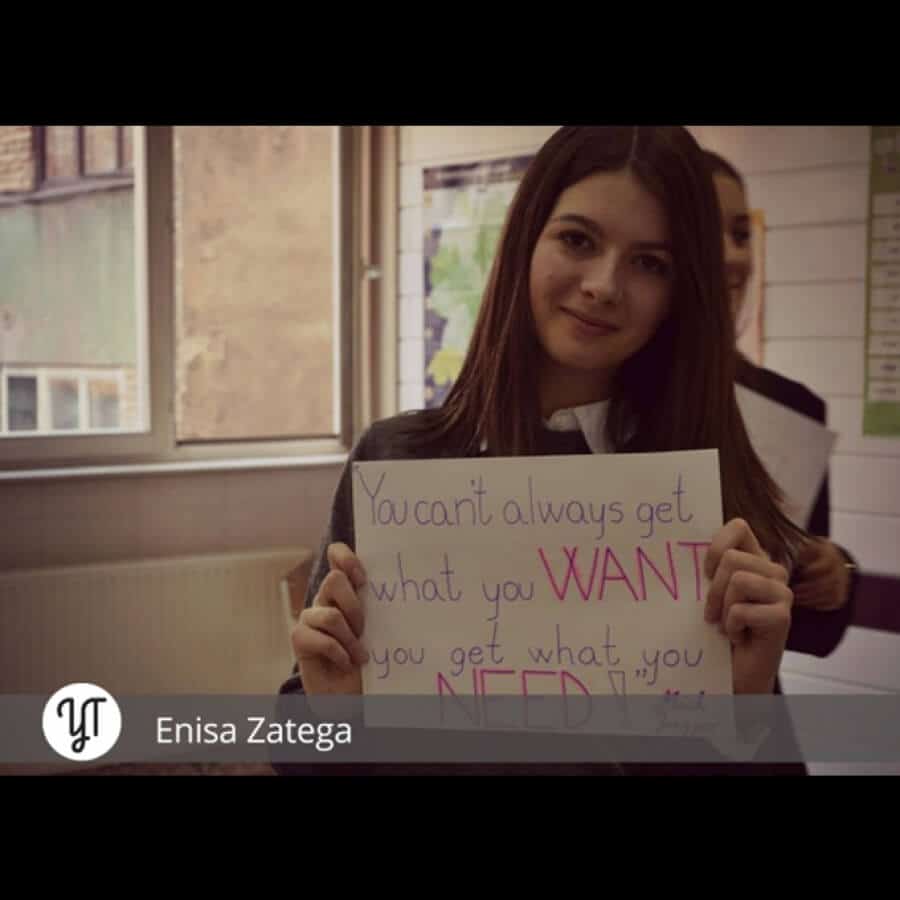How does one turn an idea into a community-oriented project? What exactly does it take to make change happen? We asked Enisa Zatega, a twenty-year-old student and a young activist from Sarajevo, who works with “Just as I am”, a local project that helps children diagnosed with autism develop their artistic abilities. Enisa reminds us that we might not be able to save the world on our own, but that should not stop us from contributing to our communities every day.
Who is Enisa?
Daughter, sister, friend and student of visual communication, obsessed with art, culture, politics, religion, contemporary, and historical social issues (and cats).
Autism is not a frequent topic of discussion among young people in the Balkans. How did you come up with the idea of setting up these workshops in the first place?
Three years ago, a friend of mine explained to me what autism actually is. She would later become my greatest supporter and an assistant in this project.
“Just as I am” started under the Balkans Let’s Get Up! program and is a collaboration between young enthusiasts from Sarajevo and Tirana.
Our initial plan was to work with children with developmental disorders, but, to achieve better results, we decided to focus on Autism spectrum disorders, while our friends in Albania chose to work with children with Down syndrome.
One can’t help but notice that similar projects have been carried out in the past. What makes this project unique?
Back in May, this project only existed as an idea at the Balkans Let’s Get Up! spring seminar. As we talked about it with our facilitators, we realized that similar projects had been tried before, but most of them worked only through the ‘raising awareness’ phase, without actually changing the lives of these kids.
What makes “Just as I am” unique are the arts and crafts workshops created to inspire and ignite the creativity that every child possesses.
Which resources does the implementation of the project require the most?
It requires time. Lots and lots of time, since working with autistic individuals demands researching the topic thoroughly. We created small teams of volunteers who join us in our workshops. Among them, there are several musicians who entertain the whole group while the workshops are going on.
How do the kids react?
All of the kids we have worked with are very different. With some we communicate easily, whereas others call for more dedication and work, but it definitely pays off. Even though it originally took us more than 3 months of researching and learning, getting in touch with them is something different and extraordinary. As soon as you start working with the children directly, you realize that books actually do not tell you much and you have to figure it out yourself.
How do the people involved react?
So far, all of them have expressed the intention of coming again. What makes us extremely happy are comments from the parents of autistic children, who thank us for what we are doing. Nobody knows their children as well as they do, so I believe they have noticed a positive response from the kids as well. Every time I hear ‘See you next Wednesday’ I smile, because the energy and the willpower those parents have for their children is what keeps me going.
However, this was not an easy task to accomplish. Where did your motivation initially come from? Has it changed throughout the process?
What inspired me at first were the stories of successful autistic people. I believe that, by creating opportunities, we could help them prosper. Pity does the opposite, the same as for any marginalized group.
What inspires me now are the children we are working with and their families. Autism turns families’ lives upside down, requiring parents to find new approaches to adapt to their children’s needs. Lots of energy and love must be dedicated to achieving identified goals. But it is possible. Only by accepting and valuing individuals who are different in some way can we set a course towards a better society.
In your opinion, what exactly does it take to make change happen?
It takes getting off the Internet. Change does not have to be something extreme and large in scope, measurable in likes on Facebook, flyers distributed, and money collected. We have chosen a way that is simpler but more personal – every time we feel a connection with a child or receive a smile, it adds value to our cause.
What comes after the project is brought to an end? Do you have any intention of carrying this project forward into the future?
Supervision by Balkans Let’s Get Up! should end at the conclusion of the project implementation phase in October. However, we plan on continuing our activities in accordance with our obligations. Parents will take away art activities suitable for children with autism spectrum disorders, and all the things that we do during the workshops can also be done individually at home. Our aim was to provide inspiration and concrete examples of exercises that will encourage families, organizations and volunteers to help autistic children develop their artistic abilities. I believe that we have fulfilled our aim.
Support us!
All your donations will be used to pay the magazine’s journalists and to support the ongoing costs of maintaining the site.
Share this post
Interested in co-operating with us?
We are open to co-operation from writers and businesses alike. You can reach us on our email at [email protected]/[email protected] and we will get back to you as quick as we can.









